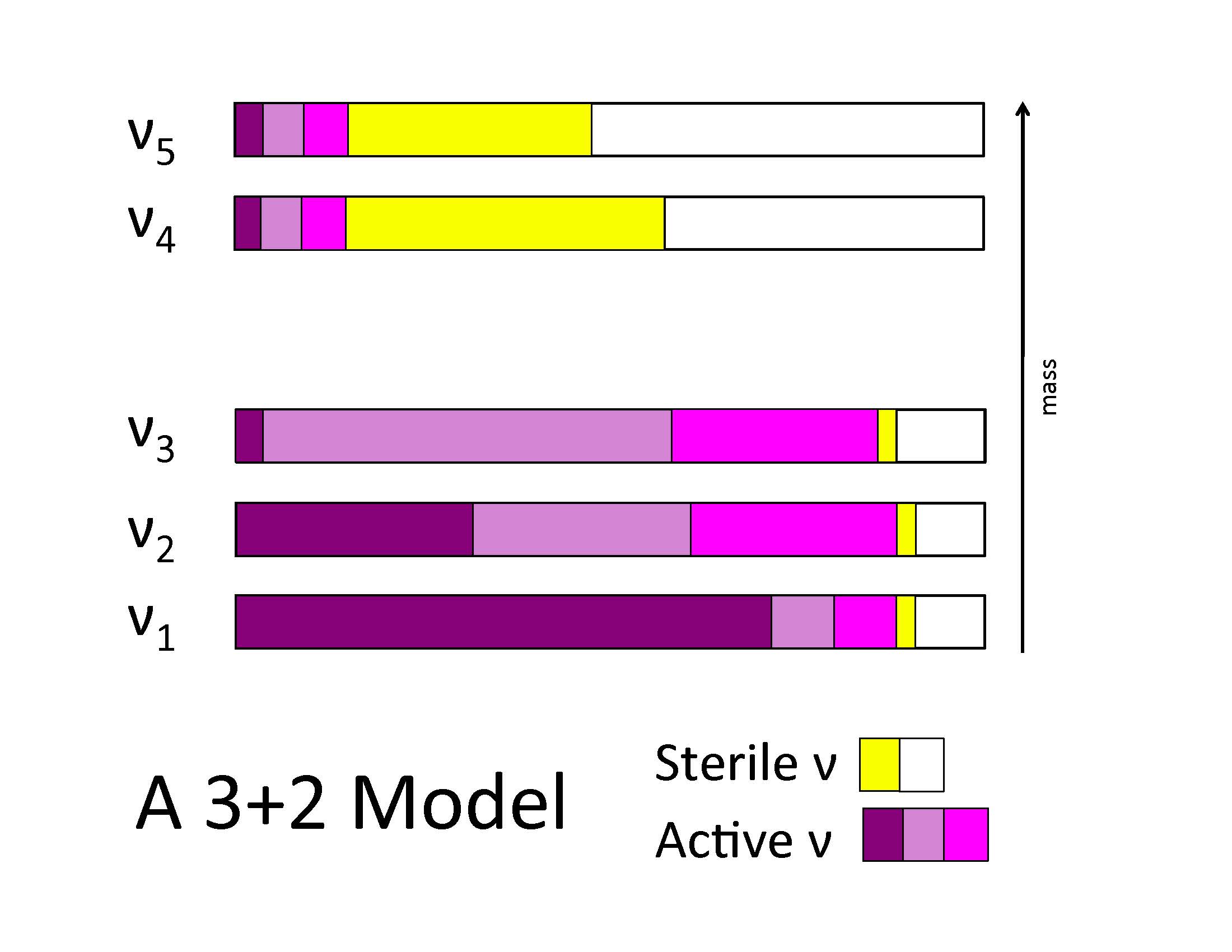
Phenomenology: Sterile Neutrinos
Our group works on neutrino phenomenology. Our focus is mainly on oscillation models with sterile neutrinos, and in spring 2016 we published a paper on "Sterile Neutrino Fits to Short Baseline Data"
Abstract from arXiv (submitted to Nuclear Physics B)
Neutrino oscillation models involving extra mass eigenstates beyond the standard three (3+N) are fit to global short baseline experimental data. We find that 3+1 has a best fit of Δm241 = 1.75 eV2 with a Δχ2 [null-min] (dof) of 52.34 (3). The 3+2 fit has a Δχ2 [null-min] (dof) of 56.99 (7). Bayesian credible intervals are shown for the first time for a 3+1 model. These are found to be in agreement with frequentist intervals. The results of these new fits favor a higher Δm2 value than previous studies, which may have an impact on future sterile neutrino searches such as the Fermilab SBN program.
What are Sterile Neutrinos?
Almost all you ever wanted to know about sterile neutrinos is here:
- Light Sterile Neutrinos: A White Paper arXiv
Previous Useful Papers
Here are links to two important past oscillation papers:
- The original 3+1/3+2 paper arXiv and PRD
- Introducing CP violation arXiv and PRD
- The 2012 fits arXiv and Adv. in HEP
Phenomenology: Decoherence and Neutrino Beams
Graduate student Ben Jones published published this paper on "Dynamical Pion Collapse and the Coherence of Conventional Neutrino Beams"
Abstract from arXiv (published in PRD)
In this paper we consider the coherence properties of neutrinos produced by the decays of pions in conventional neutrino beams. Using a multi-particle density matrix formalism we derive the oscillation probability for neutrinos emitted by a decaying pion in an arbitrary quantum state. Then, using methods from decoherence theory we calculate the pion state which evolves through interaction with decay-pipe gases in a typical accelerator neutrino experiment. These two ingredients are used to obtain the distance scales for neutrino beam coherence loss. We find that for the known neutrino mass splittings, no non-standard oscillation effects are expected on terrestrial baselines. Heavy sterile neutrinos may experience terrestrial loss of coherence, and we calculate both the distance over which this occurs and the energy resolution required to observe the effect. By treating the pion-muon-neutrino-environment system quantum mechanically, neutrino beam coherence properties are obtained without assuming arbitrary spatial or temporal scales at the neutrino production vertex.
New Neutrino Sources and Experiments: KDAR and KPIPE
We also enjoy the challenge of dreaming up new types of neutrino sources and new neutrino experiments. An example is KPIPE. This relies on kaon decay-at-rest, which produces a monoenergetic neutrino at 236 MeV. These neutrinos can be copiously produced at high intensity beam dumps for proton beams at about 3 GeV or above. This is a unique source of neutrinos for oscillation and cross section studies. KPIPE uses the monoenergetic neutrinos to look for νμ disappearance. This experiment could run at Japan's MLF facility. The detector consists of a 100 m long pipe full of scintillator oil. If sterile neutrinos exist, then one should see disappearance of events along the pipe, tracing the oscillation wave. You can read about KPIPE here: (arXiv) and (PRD) . As you can see below, KPIPE has outstanding reach in the oscillation parameter space!
